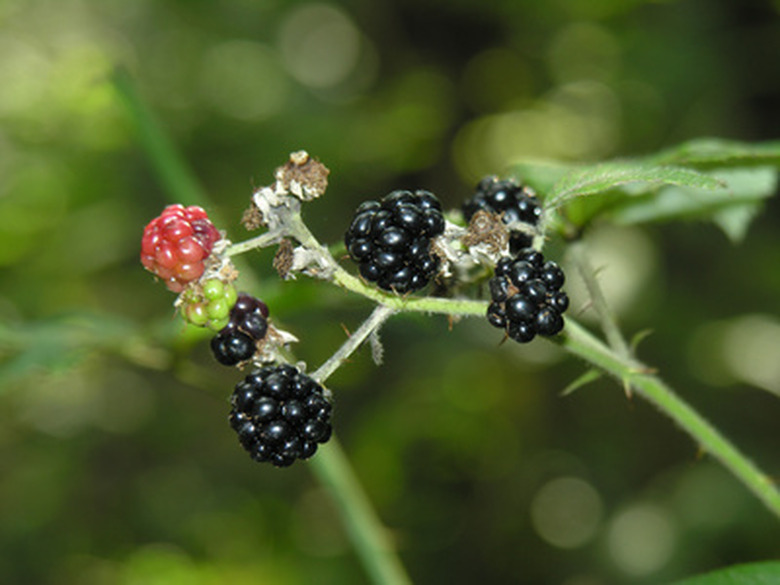Blackberries That Grow In Wisconsin
Wisconsin is home to many species of blackberry. Blackberry has many common names, including marionberries, dewberries and loganberries. Blackberries are members of the Rubus family, which also contains raspberries. Many of the blackberries in Wisconsin are native, but some have also been introduced. Cultivation methods for all blackberry varieties are very similar.
Rubus Wisconsinensis
Rubus wisconsinensis, or the Wisconsin blackberry, grows into a rounded blackberry shrub. Wisconsin blackberry will need pruning to keep it to a manageable size. Growing well in most soil types that drain well, Wisconsin blackberry does best in full sun, but can also grow well in partial sun.
- Wisconsin is home to many species of blackberry.
- Many of the blackberries in Wisconsin are native, but some have also been introduced.
Rubus Wheeleri
Wheeler's blackberry, or Rubus wheeleri, is a variety of blackberry that is similar to other forms of blackberry. Wheeler's blackberries thrive in the same sun conditions as Wisconsin blackberries. If planting any kind of blackberry in Wisconsin, plant upright varieties 4- to 6-feet apart. Make sure you give your blackberries an inch of water per week from June through the end of the growing season.
Rubus Spectatus
Rubus spectatus, or sphagnum blackberries, are bushes that generally grow in a rounded form. Like Wisconsin blackberries and other berries, it grows best in full sun. It also, like the Wheeler's blackberry, should be spaced 4- to 6-feet apart and given at least 1 inch of water from June until the end of the growing season. Fertilize this blackberry, and other blackberries, in the spring with 1 to 2 inches of compost or composted manure.
- Wheeler's blackberry, or Rubus wheeleri, is a variety of blackberry that is similar to other forms of blackberry.
- It also, like the Wheeler's blackberry, should be spaced 4- to 6-feet apart and given at least 1 inch of water from June until the end of the growing season.
Rubus Rosa
The Rubus rosa, or the rose blackberry, is another form of blackberry that grows well in Wisconsin. The flowers of this blackberry are hermaphroditic and contain both male and female parts, making pollination of very easy. Care and cultivation of the Rubus rosa is similar to other species of blackberries.
Grow Blackberries From Seeds
Blackberries (Rubus spp. ), which grow best in U.S. Department of Agriculture plant hardiness zones 5 through 10, are commonly propagated through cuttings or division. Place the fruit in a blender, pulsing on low until the seeds and fruit separate. Scratch any seed without damage with a sharp knife. Fill seed trays with seed starter soil, and spread the blackberry seeds on top of the soil. Blackberry seed germination does not require bright light since the seeds are covered with soil. Remove the weeds from a planting area in full to partial sun. Work the compost into the top 8 inches of soil. Smooth the soil with a rake. Space the rows 10 feet apart. Water the soil around the base of the blackberry plants until it is slightly muddy.
- The Rubus rosa, or the rose blackberry, is another form of blackberry that grows well in Wisconsin.
- Water the soil around the base of the blackberry plants until it is slightly muddy.
References
- USDA: Classification for Kingdom Plantae Down to Genus Rubus L.
- The Old Farmer's Almanac: Blackberries
- HortScience: Drying Interferes with Germination of Blackberry (Rubus Sp.) Seeds in Vitro
- Oklahoma State University Cooperative Extension: Propagation of Fruit and Nuts by Seed
- Oregon State University: Growing Blackberries in Your Home Garden
